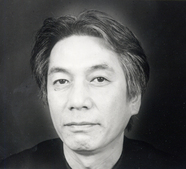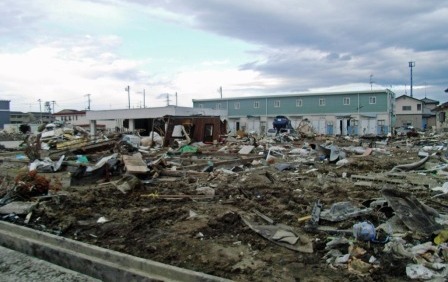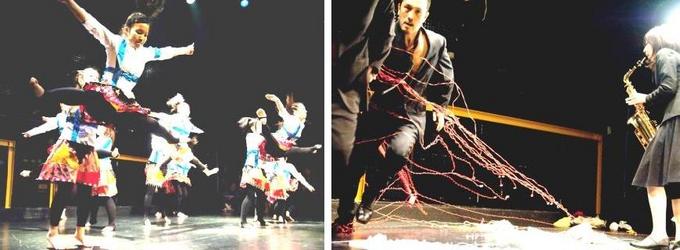Special Series: Connect with Tohoku--Real Voices 003
What Art Can Do at a Time of Crisis?Iku Otani
Executive Director, NPO DANCE BOX
On March 11, 2011, I was having a meeting with artists about a project which was due to start in April when I learned about the earthquake in the Tohoku region. I didn't imagine the damage would be so immense at the time, but the memory of the Great Hanshin Earthquake 16 years ago came to mind immediately. At that time, I lived in a house on a hill in Kobe's Suma Ward. I had just finished writing an article in time for a deadline. As I stood up to go to bed, the earthquake struck. It was 5:46 a.m. The ground shook for a very long time, but there was no serious damage to the house. I even went to bed thinking nothing of it. Later in the morning, a friend came to check if I was all right, since my house was on a hillside. It was only then that I realized the scale of the disaster. I looked down the hill and saw that the Shin-Nagata district below was ablaze and sparks were flying up toward us. Although my neighborhood didn't suffer any major damage, I saw that many houses just 50 meters below us were in various stages of collapse. After that, I visited nursery schools where people were taking shelter and encouraged children and their mothers to do simple exercises. I remember going to as many shelters as possible and doing whatever I could to help relieve the stress that the evacuees must have been experiencing. I felt encouraged seeing the children's tension ease as I helped them to stretch their muscles.
Now, in 2011, in the aftermath of the Great East Japan Earthquake, we held the Arts NPO Forum in Tottori Prefecture from March 18 to 20. We had a discussion on "What the arts and arts NPOs can do now", which led us to establish the Arts NPO Aid fund.
To support artists and non-profit art organizations affected by the disaster, we are providing not only funding but also equipment and human resources, while starting to build up a video archive of the performing arts. We also launched Art Aid Tohoku at the initiative of Gallery Shimada, which had previously organized ACT Kobe to support victims of the Great Hanshin Earthquake through the arts. Playwright and director Oriza Hirata has set up Art Vision Network 311 to help reconstruct the affected areas through cultural endeavors and the arts. On April 16, DANCE BOX held an event to announce its success in winning the Japan Foundation Prize for Global Citizenship, followed by Dance Live Kobe #1.
Even after the Tohoku earthquake, most dance events in the Kansai region, that is, in mid-western Japan, were held as scheduled. Many performers taking part in those events told me they wanted to do something for the people of the Tohoku area but didn't know how. I thought it would be meaningful to convey our various feelings, expressed in various ways from far away Kobe. After all, the origin of dance is prayer. In Dance Live, 47 groups captivated the audience with passionate performances from 2 p.m. to 10 p.m. All the revenue from admissions and food-and-drink sales is being used to support artists and arts NPOs in the disaster-struck areas.
There's no doubt the recovery from the earthquake will take a tremendous amount of time. We must consider the plight of the affected people as our own problem and keep working together in the long term. I intend to seek support and ideas from artists and continue the Dance Live KOBE effort. Let me also add that I've received encouraging emails from a great many people in the arts field abroad. Never before had I felt that the people on this planet were so close. "Gambare, Nippon!" (Don't give up, Japan) has now become a slogan for the country as a whole. For my part, I would like to focus on activities that connect one person to another, and region to region.
What can dance do at a time of crisis? What role can the arts play? I want to continue, with a quiet passion, to find the answers to the problems of the mind and body which may become more acute among the disaster victims as the days pass.
 Iku Otani
Iku Otani
Executive Director, NPO DANCE BOX
Born in Osaka, Otani was active as a dancer and producer until 1979. Appointed as producer by the TORII HALL in 1991, he produced the OSAKA DANCE EXPERIENCE in 1995. He founded DANCE BOX in 1996 to plan and produce about 30 cross-genre contemporary dance shows and workshops annually. After leaving TORII HALL, he expanded DANCE BOX into an NPO in 2002 and opened the Art Theater dB at Festival Gate in Osaka. He is a recipient of the 2010 Japan Foundation Prize for Global Citizenship.
Related Events
Keywords
- Dance
- Theater
- Performing Arts
- Sport
- Social Securities/Social Welfare
- NPO/NGO
- The Japan Foundation Prizes for Global Citizenship
- Japan
- Great East Japan Earthquake
- Ishinomaki
- Kesennuma
- Kobe
- Great Hanshin Earthquake
- Arts NPO
- Arts NPO Forum
- Arts NPO Aid fund
- Prizes for Global Citizenship
- Oriza Hirata
- DANCE BOX
- volunteer
Back Issues
- 2019.8. 6 Unraveling the Maker…
- 2018.8.30 Japanese Photography…
- 2017.6.19 Speaking of Soseki 1…
- 2017.4.12 Singing the Twilight…
- 2016.11. 1 Poetry? In Postwar J…
- 2016.7.29 The New Generation o…
- 2016.4.14 Pondering "Revitaliz…
- 2016.1.25 The Style of East As…
- 2015.9.30 Anime as (Particular…
- 2015.9. 1 The Return of a Chin…




